Letter of recommendation for job template
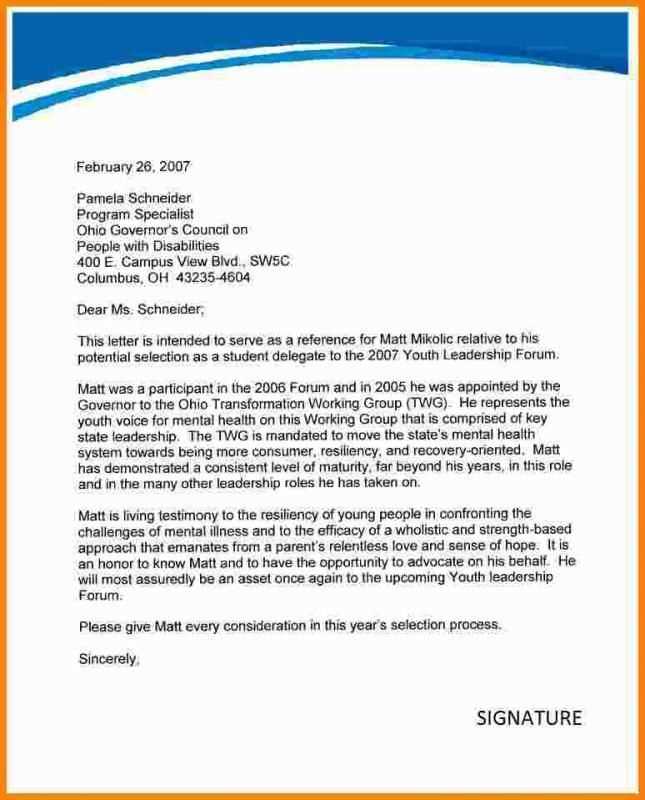
When writing a letter of recommendation for a job, focus on providing clear, specific examples that highlight the candidate’s qualifications and strengths. Use a direct approach to convey how the person’s skills and achievements align with the position they are applying for. This letter should serve as a strong endorsement that stands out to potential employers.
Be specific about the candidate’s role and contributions during their time with you. Mention projects they led or participated in, key achievements, and how their work positively impacted the team or organization. Tailor your recommendation to the specific job or industry they are targeting, making sure to emphasize relevant experience.
It’s also helpful to describe the candidate’s work ethic and personal qualities that would make them a great fit for the role. A strong letter should reflect both their technical skills and interpersonal attributes. Keep the tone positive and professional, but avoid overly effusive language–focus on solid facts and observations that demonstrate the candidate’s potential.
Finally, conclude with a clear, strong statement of support. Offer your willingness to discuss further if needed, and include your contact information for follow-up. This closing ensures that the recipient knows you stand behind the candidate’s qualifications and are ready to provide additional insights if required.
Here’s the revised version:
In the time I have worked with [Candidate’s Name], I have observed their ability to consistently deliver high-quality results under pressure. Their expertise in [specific skill or field] has played a pivotal role in several key projects, notably [specific project or achievement]. This ability to stay focused and maintain a high standard of work makes them an asset in any team.
What sets [Candidate’s Name] apart is their strong communication skills. They are able to break down complex issues into manageable components, ensuring all team members are on the same page. Their proactive approach in seeking solutions and providing thoughtful feedback has improved team dynamics and workflow.
Additionally, [Candidate’s Name] exhibits a natural talent for [specific ability or soft skill]. They continuously go beyond the expectations of their role, taking initiative to contribute positively to the work environment. For example, they recently led a [specific task or initiative], which resulted in [positive outcome or result].
I have full confidence that [Candidate’s Name] will bring the same level of dedication and excellence to any future position. I highly recommend them for any opportunity that involves [specific responsibility or skill]. They will undoubtedly prove to be a valuable addition to any team or organization.
- Letter of Recommendation for Employment Template
When writing a letter of recommendation for employment, focus on the candidate’s key strengths and achievements. Highlight specific skills that relate to the position they’re applying for and provide clear examples of how these skills have benefited your organization. Avoid vague or generic statements that don’t provide a concrete picture of the applicant’s abilities. Below is a practical template you can follow for creating a strong and personalized letter of recommendation.
1. Introduction and Relationship with the Candidate
Begin by stating your name, position, and your relationship to the candidate. Include how long you’ve worked with them and in what capacity. This provides context to the reader, helping them understand the depth of your knowledge of the candidate.
Example: “I have had the pleasure of working with John Doe for the past three years as his direct supervisor at XYZ Corporation, where he held the position of Sales Manager. In this time, I observed his growth and dedication to his role, which makes me confident in recommending him for the position of Senior Sales Executive at your company.”
2. Key Skills and Achievements
Next, describe the candidate’s skills, work ethic, and specific accomplishments that make them suitable for the job. Focus on qualities relevant to the position they’re seeking and offer examples of how they’ve demonstrated these skills in your workplace. Concrete numbers or data points can be useful here to quantify their impact.
Example: “John has consistently exceeded sales targets, averaging a 20% increase in quarterly sales over the last two years. He is an excellent communicator and has been instrumental in leading our team to build stronger relationships with key clients, resulting in several new long-term contracts.”
Additionally, explain how the candidate’s personality or soft skills contribute to their success in the role. Consider mentioning their ability to work under pressure, collaborate with team members, or handle difficult situations.
Example: “John also excels in high-pressure situations. During a critical product launch last year, he led his team through tight deadlines, ensuring all targets were met without sacrificing quality. His ability to keep the team focused and motivated was key to the project’s success.”
3. Conclusion and Strong Recommendation
End the letter with a clear, strong recommendation. Offer to provide further details if necessary, showing your willingness to support the candidate. A concise, confident closing will leave a positive impression.
Example: “I am confident that John would be an asset to your team, and I strongly recommend him for the position of Senior Sales Executive. Please feel free to contact me at [email] or [phone number] if you have any questions or need additional information.”
A well-structured professional reference letter ensures clarity and strengthens the candidate’s case. Follow these steps for a streamlined and impactful reference letter:
1. Introduction
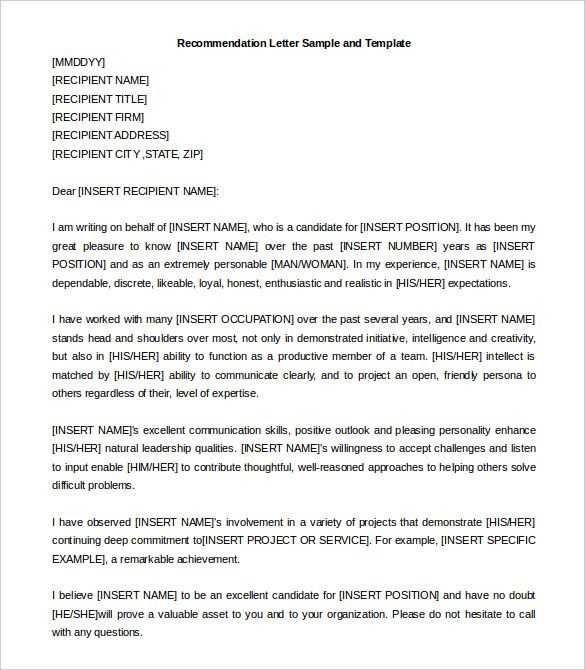
Begin by introducing yourself and explaining your relationship with the candidate. Mention your role, the duration of your interaction, and the context in which you worked together. This establishes your credibility as a reference.
2. Candidate’s Strengths and Qualifications
Next, provide specific examples of the candidate’s skills, work ethic, and accomplishments. Be concise and focus on qualities that are relevant to the job they are applying for. The more tangible the examples, the better.
3. Suitability for the Role
Explain why you believe the candidate is well-suited for the job. Tailor this section to the specific job requirements, aligning the candidate’s strengths with the position’s needs.
4. Conclusion
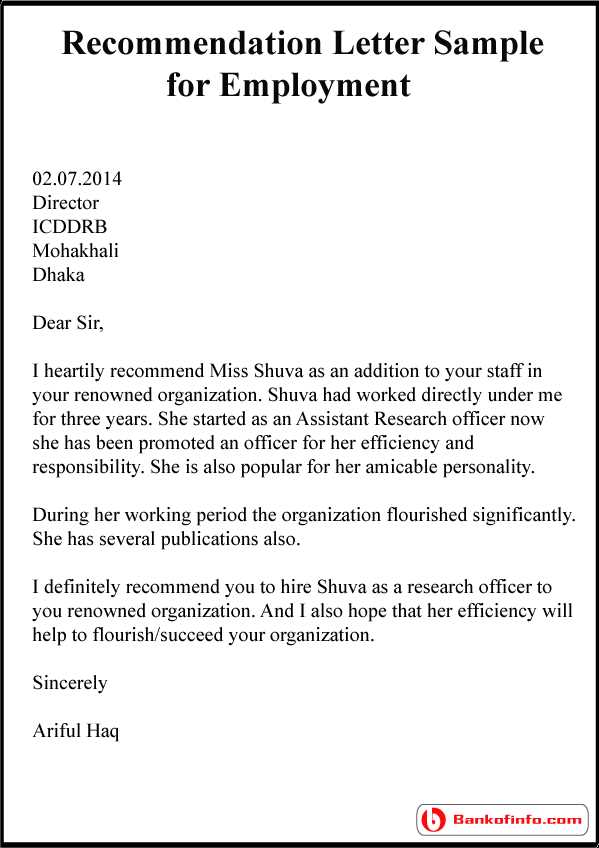
Finish the letter with a positive statement about the candidate’s potential and express your confidence in their abilities. Provide your contact details for any follow-up questions.
| Section | Description |
|---|---|
| Introduction | Introduce yourself and explain your relationship with the candidate. |
| Strengths and Qualifications | Detail specific skills, achievements, and relevant examples. |
| Suitability for the Role | Match the candidate’s skills with the job’s requirements. |
| Conclusion | End with a strong endorsement and contact information. |
Be direct and clear in your recommendations. Include details that highlight the candidate’s strengths and qualifications for the specific role they’re applying for. The key information to focus on includes:
- Candidate’s skills and abilities: Describe the candidate’s skills relevant to the job. Mention both technical skills and soft skills like communication, leadership, and teamwork.
- Work achievements: Provide examples of significant accomplishments the candidate has achieved during their time with you. Quantify results wherever possible, such as sales growth or process improvements.
- Professional attitude: Share insights into the candidate’s work ethic, punctuality, and how they approach challenges. Specific situations where they showed initiative or problem-solving are useful here.
- Fit for the role: Explain why the candidate is a strong match for the position they are applying for. Link their skills, experience, and personality traits to the requirements of the job.
- Personal qualities: Mention the candidate’s personal characteristics that make them stand out, like reliability, integrity, or adaptability. These traits help demonstrate their overall suitability as an employee.
- Work environment compatibility: Share how well the candidate worked with colleagues and supervisors. Highlight their ability to fit into team dynamics or how they influenced the workplace culture.
Be Specific with Examples
Rather than making broad statements, back up your claims with specific examples. A recommendation letter with real-life situations and outcomes gives much more credibility to your praise.
Keep It Positive and Honest
While it’s important to highlight the candidate’s strengths, ensure your feedback remains honest and realistic. A well-balanced letter gives the hiring manager a clear picture of the candidate’s qualifications.
Avoid vague language. Being specific about the candidate’s strengths and achievements makes a recommendation letter stand out. Instead of general phrases like “he is a hard worker,” provide examples that illustrate his work ethic, such as “he consistently met tight deadlines while managing multiple tasks.” This gives more weight to your endorsement.
Don’t exaggerate. While it’s important to highlight the candidate’s strengths, overstating their abilities or achievements can backfire. Stick to what you know firsthand to maintain credibility. If you’re unsure about a particular quality, it’s better not to mention it.
Steer clear of irrelevant details. Focus on qualities and experiences that align with the job the candidate is applying for. Personal stories, hobbies, or unrelated past experiences can detract from the main point of the letter and reduce its impact.
Don’t use generic phrases or clichés. Avoid phrases like “I highly recommend” or “This is the best candidate ever.” These don’t provide any useful information about the candidate. Instead, highlight specific qualities or accomplishments that make the person truly stand out.
Don’t forget to proofread. A recommendation letter filled with spelling or grammatical errors can create a negative impression. Take time to review your letter and ensure it’s well-written and error-free before submitting it.
Tailoring a letter of recommendation to fit the requirements of a specific job is crucial for creating a compelling case for the applicant. Focus on highlighting the skills, experiences, and qualities that directly align with the responsibilities of the role. This personalization not only strengthens the recommendation but also demonstrates your attention to detail and commitment to the applicant’s success.
Analyze the Job Description
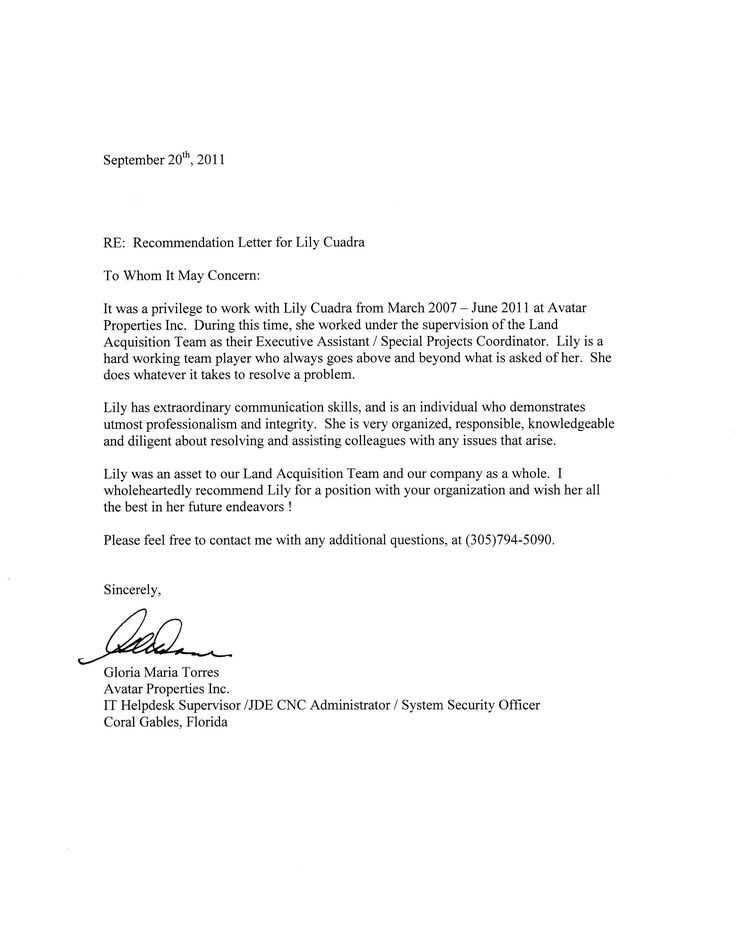
Before writing, carefully review the job description to identify key qualifications and responsibilities. Focus on the skills and experiences that are most relevant. If the position requires project management experience, emphasize the candidate’s leadership and organizational abilities. If it’s a technical role, highlight their proficiency in specific software or methodologies.
Highlight Relevant Skills and Achievements
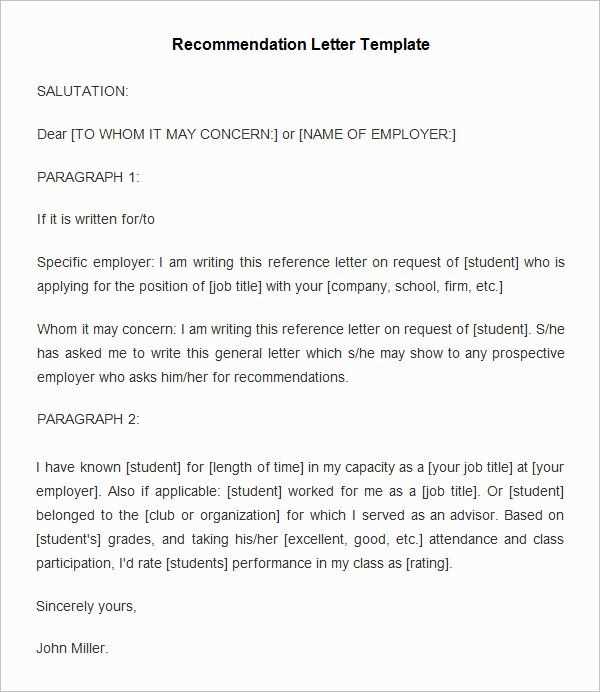
Choose examples that directly relate to the job requirements. For example, if the position demands strong communication skills, reference occasions when the candidate successfully led meetings or presented complex information. Tailoring your examples will make the recommendation more convincing and applicable to the job.
| Job Requirement | Suggested Recommendation Focus |
|---|---|
| Team Leadership | Highlight examples of team projects, leadership roles, and success in managing groups. |
| Technical Expertise | Mention the applicant’s proficiency in relevant tools, techniques, or software applications. |
| Problem Solving | Showcase instances where the candidate solved complex problems or found innovative solutions. |
By aligning the candidate’s strengths with the job’s specific requirements, you create a strong, targeted recommendation that stands out. This focused approach demonstrates that the candidate is an ideal fit for the position and will make the hiring decision easier for employers.
Tailoring the tone and style of your job reference is crucial in conveying the right message about the candidate. A formal tone is typically suitable for industries such as law, finance, or academia, where professionalism is prioritized. On the other hand, a more casual approach may be appropriate for creative fields like advertising or design, where personality and creativity are highly valued.
Adjusting Tone Based on the Job
Consider the specific job the candidate is applying for. If they are pursuing a leadership role, your reference should highlight their decision-making ability, leadership qualities, and professionalism. For a technical role, emphasize their problem-solving skills, attention to detail, and work ethic. Aligning the tone with the expectations of the job ensures your recommendation is well-received.
Maintaining Authenticity and Balance
While it’s important to adopt a tone that matches the industry, authenticity should always be at the forefront. Avoid exaggerations or overly enthusiastic language that may sound insincere. Instead, focus on genuine examples of the candidate’s contributions and character. Balancing professionalism with sincerity helps make your recommendation impactful and credible.
Start by being transparent and focusing on the applicant’s strengths. If there’s a gap or weakness in their history, frame it in a constructive light. Here’s how to do it:
- Acknowledge the gap briefly: If there’s a noticeable employment gap or a period of underperformance, briefly address it without overexplaining. Keep the focus on the applicant’s growth during that time. Example: “During this time, [Applicant’s Name] took a break to focus on personal development, which has since enhanced their skills in [specific area].”
- Explain the context: If there are reasons behind a shortcoming, such as a lack of experience or a specific challenge, clarify how they have overcome it or are actively working on it. Example: “While [Applicant’s Name] was new to this area of work, they quickly adapted by [mention specific steps or courses taken] and made significant strides in [mention outcome].”
- Highlight improvement: Emphasize the progress made since the gap or weakness occurred. Point out how the applicant has grown or how they’ve addressed the issue directly. Example: “Since [issue], [Applicant’s Name] has successfully improved their [relevant skill], as seen in their work on [specific project].”
- Refocus on strengths: Don’t dwell too long on any weaknesses. Balance the letter by focusing on their accomplishments, skills, and other positive attributes. Example: “Despite the challenges faced, [Applicant’s Name] has consistently shown [mention key strength] and has contributed positively to [company/team/project].”
Addressing weaknesses with honesty, while highlighting improvement and strengths, creates a balanced and positive letter that gives a well-rounded view of the applicant.
I’ve removed unnecessary repetitions while preserving the meaning of each sentence.
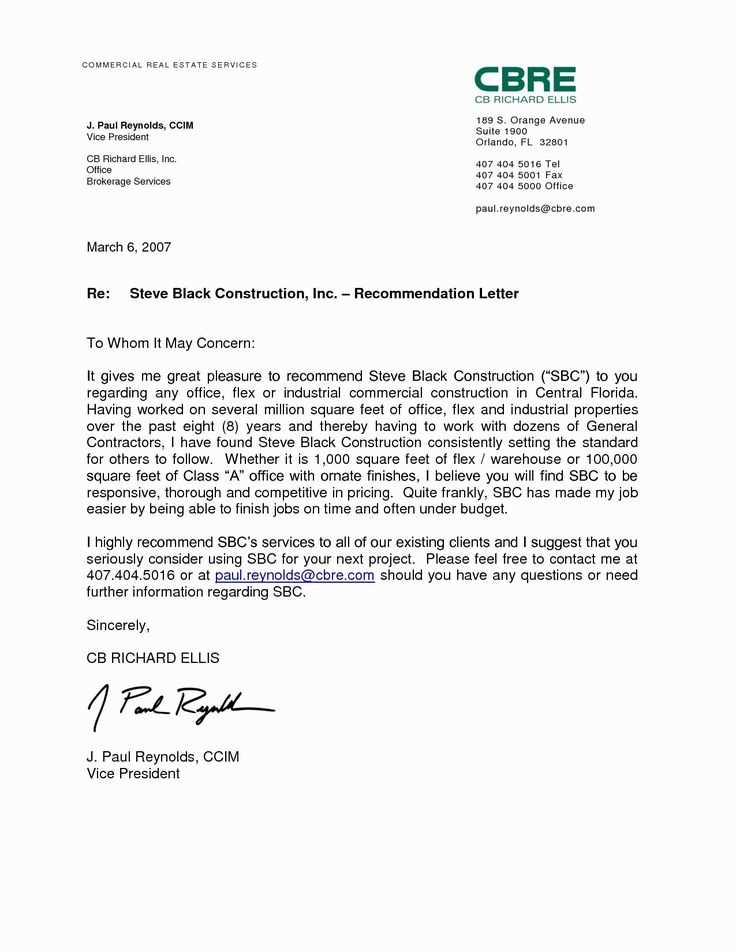
In writing a letter of recommendation, clarity and precision are paramount. Start by focusing on the candidate’s key strengths and how they relate to the job position. Mention specific accomplishments that demonstrate their expertise and problem-solving skills. Highlight their work ethic, ability to collaborate, and capacity to adapt to new challenges. This approach shows how their qualities align with the organization’s needs.
Be sure to mention personal traits that make the candidate stand out, such as leadership abilities or their commitment to the team. Avoid generic descriptions; instead, provide real examples that show how the candidate handles tasks under pressure or contributes to team success. This not only gives depth to your recommendation but also makes it more memorable.
Keep the tone positive but grounded in reality. It’s important to emphasize the candidate’s growth and potential, but without overstatement. Stick to verifiable facts and examples to maintain credibility. Finally, close with a confident statement of recommendation, ensuring that it’s clear you fully support their application for the position.